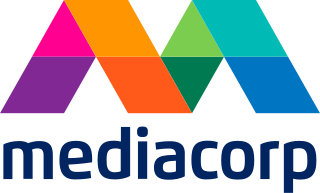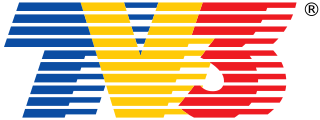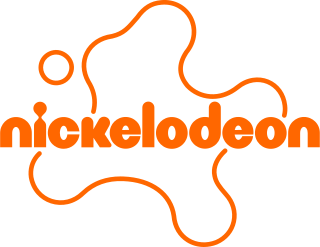
Mediacorp Pte. Ltd. is the state-owned public media conglomerate of Singapore. Owned by Temasek Holdings—the investment arm of the Government of Singapore—it owns and operates television channels, radio, and digital media properties. It is headquartered at the Mediapolis development in Queenstown's One-north precinct, which succeeded Caldecott Hill—the long-time home of its predecessors—in 2015; as of 2022, Mediacorp employs over 3,000 employees; a large number of them are in both public and private sector broadcasting.
Television in Singapore began on 15 February 1963. The public broadcaster, MediaCorp TV, has a monopoly on terrestrial television channels and is fully owned by government holding company Temasek Holdings. Local pay TV operators are StarHub TV and Singtel TV. The private ownership of satellite dishes was previously forbidden.

Metropolitan TV Sdn. Bhd., operating as 8TV, is a Malaysian Chinese-language free-to-air television network focused on the Chinese community of Malaysia. It is owned and operated by Media Prima. The channel formerly existed as MetroVision from 1 July 1995 until 1 November 1999 and was relaunched as 8TV on 8 January 2004.

Channel 5 is an English-language free-to-air terrestrial television channel in Singapore, owned by state media conglomerate Mediacorp. The channel primarily airs general entertainment and news programming in the English language.

Sistem Televisyen Malaysia Berhad, operating as TV3, is a Malaysian free-to-air television channel owned by Malaysian media conglomerate, Media Prima. TV3 is the third oldest TV station in Malaysia. It was launched on 1 June 1984 as the country's first and oldest private television channel. As of October 2021, TV3 remains to be the most-watched television station in Malaysia with about 17% of its viewing share among other Malaysian television stations, followed by TV9 with 15% of its viewing share, making two of them become the second most-watched television station in the country, despite the declining viewership of 3 free-to-air television channels.

Sun TV is an Indian Tamil-language general entertainment pay television channel owned by Sun TV Network. It was launched on 14 April 1993. It is the flagship channel of the Chennai-based media conglomerate Sun Group's Sun TV Network. It was founded and is owned by Kalanithi Maran.

CNA is a Singaporean multinational news channel owned by Mediacorp, the country's state-owned media conglomerate. CNA broadcasts free-to-air domestically in Singapore, and internationally as a pay television channel to 29 territories across the Asia-Pacific. It also streams on Mediacorp's domestic meWatch platform, and on free ad-supported streaming television (FAST) platforms and YouTube internationally.
CableView Services Sdn. Bhd., operating as Mega TV was Malaysia's first ever subscription-based pay television service. It was incorporated on 18 October 1994 and began transmissions on 1 November 1995 and was operated by Sistem Televisyen Malaysia Berhad (TV3), is a Malaysian free-to-air television network owned and operated by Malaysian Resources Corporation Berhad (MRCB).

Radio Televisyen Malaysia, also known as the Department of Broadcasting, Malaysia is the national public broadcaster of Malaysia, headquartered at Angkasapuri, Kuala Lumpur. Established on 1 April 1946 as Radio Malaya, it is the first and the oldest broadcaster in the country.
Events from the year 1992 in Singapore.

Woodlands Wellington Football Club was a professional football club based in Woodlands, Singapore which played in the S.League, the top division of football in Singapore. The club took part in S.League from 1996 to 2014. They are at the 4,300 seater Woodlands Stadium, where they have played since their establishment.

Star Hub TV is a pay television service provided by StarHub in Singapore. It has been a subsidiary of StarHub Limited since StarHub acquired Singapore Cable Vision (SCV) in 2001, and was the sole pay-TV operator in the country until 2007 when mio TV, an IPTV service from its competitor, Singtel, was launched.
Public radio broadcasting began in Singapore in April 1925 after the Amateur Wireless Society of Malaya obtained a temporary license to broadcast. Radio Singapura was established as the first local mass market radio service in 1959. Subsequently, on February 15, 1963, before the withdrawal of the British Armed Forces and after the merger with Malaya, Singapore's first television service began as Televisyen Singapura under its owner, Radio Television Singapore (RTS).

Cinemax Asia is a pan-Asian pay television channel. Part of the HBO Asia network, it features action, science-fiction, thriller, and adult comedy films. Cinemax Asia is headquartered in Warner Bros. Discovery Asia office in Singapore.
Central was a Singaporean free-to-air terrestrial television channel in Singapore, owned by state media conglomerate MediaCorp.
Suria is a Malay-language free-to-air terrestrial television channel in Singapore, owned by state media conglomerate Mediacorp. The channel broadcasts general entertainment and news programming in the Malay language, including original programming, and imported programmes from Malaysia and Indonesia.
Asia Business News (ABN) was a Singapore-based pan-Asian business news channel. Launched on 1 November 1993, it was owned through a partnership between Dow Jones & Company, Tele-Communications Inc., Television New Zealand, and other local investors.

Nickelodeon is a pan-Asian pay television channel operated by Paramount Networks EMEAA and owned by Paramount International Networks, based in Singapore and broadcast to audiences in Southeast Asia and certain regions in Oceania like Polynesia and Papua New Guinea. The channel was launched on 1998 and mainly broadcasts original series from Nickelodeon's namesake television channel in the United States.
The following lists events that happened during 2013 in the Republic of Singapore.
City TV was a free-to-air terrestrial television channel in Singapore, owned by state media conglomerate MediaCorp.










